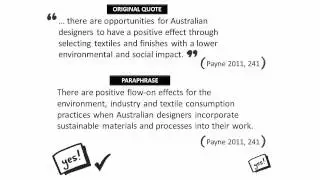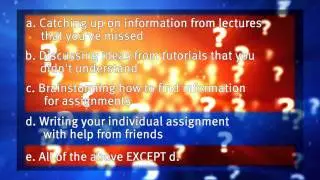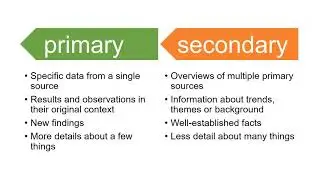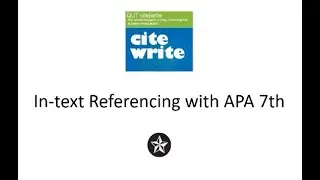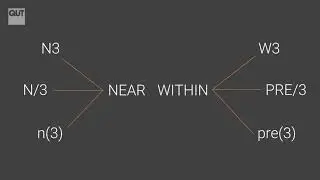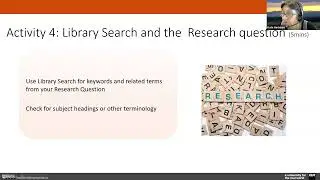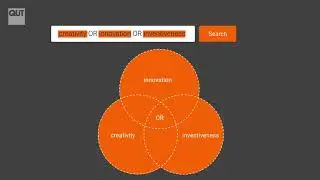In-text referencing with APA 7th
Transcript:
There are two reasons for referencing. The first is to give credit for the ideas of others - it is so important to avoid plagiarising.
The second, is to help your reader find the part of the source that you have discussed, so that they can read it if they wish. Yes, this includes your lecturer too 😊.
The in-text citation is the first part of your reference. It includes the author and the date of your source.
You need to include an in-text citation every time you quote, paraphrase or summarise somebody else's words or ideas - that includes images, information from the internet, and even tweets.
For your reader to be able to easily find what you've referred to, your in-text citation needs to include specific page numbers as well as the author and the date.
This video will take you through a series of examples that show you how to format your in-text citations.
The QUT cite|write guide has all of the details you will need to get citations right - https://www.citewrite.qut.edu.au/cite...
It shows examples for when you are paraphrasing an idea -when you are writing about someone else's idea in your own words;
When you are quoting someone else's words directly - when you include a portion of their work word-for-word to best illustrate an idea;
When you are comparing the ideas of more than one author - or "synthesising" the ideas contained in multiple works;
And when you are summarising the main ideas from across a whole work.
For in-text citations, the APA style requires that you place the author name, date and page number (or range) in curved brackets, either within the sentence discussing that idea, or before or after a direct quote.
A full reference for the work then appears at the end of your assignment, with all the information your reader will need to follow it up.
Let's look at when we are paraphrasing an idea from a single work.
You've written a sentence or paragraph, incorporating an author's idea by restating it in your own words…
Place the in-text citation within that paragraph, situated close to the first mention of the work, author or idea.
If you've already mentioned the author's name within your sentence, you can omit it from the brackets and just include the date and the page number/s.
If using a direct quote helps you to better illustrate an idea within your writing, also include the author, date and page number in your citation.
When synthesising ideas from two or more sources, separate each with a semi-colon and place in author alphabetical order.
You may also wish to summarise the main ideas from across a whole work. If you are drawing together ideas from across a source, the APA style does not require you to include page numbers.
If you are referring to an idea that appears over more than one page, include the page range in your citation. Use a dash to join the start and end page and a pp. instead of a p. to indicate multiple pages.
Don't forget that social media posts also need to be credited. Cite Write shows you how to create a reference for a post from Twitter, Instagram and Facebook.
https://www.citewrite.qut.edu.au/cite...
As there are no page numbers associated with social media posts, simply state the author's name and the date in your in-text citation.
You may find you need to use other variations as you cite sources for your assignments. For extra guidance, check the examples in Cite Write or chat with a friendly librarian.




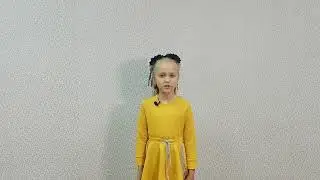
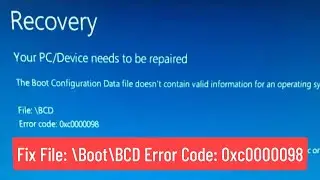

![Wordle Best Starting Word Revisited [How to Win More]](https://images.videosashka.com/watch/4FY28GWPddI)
